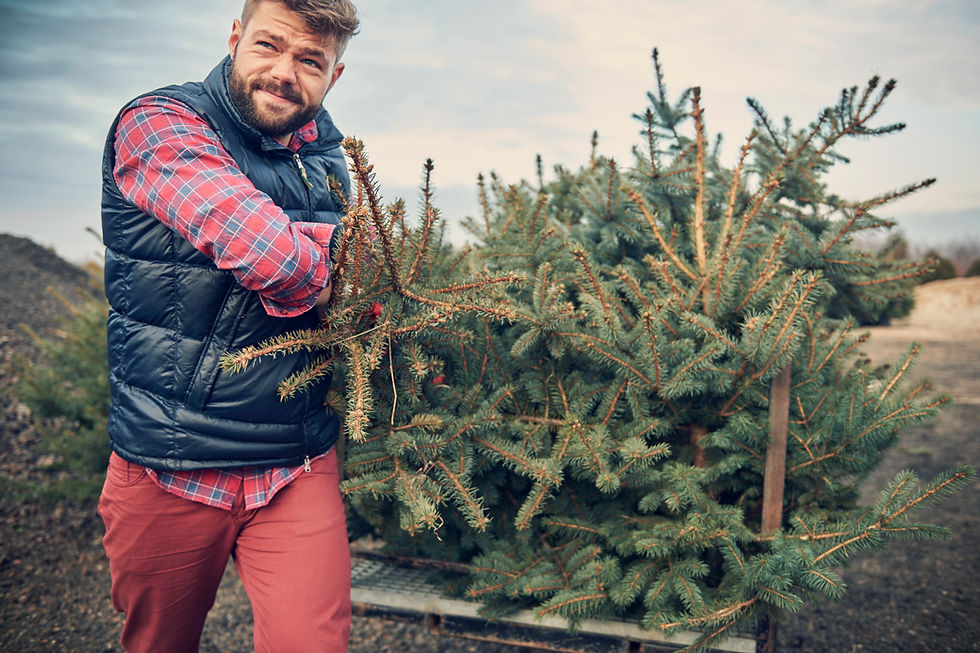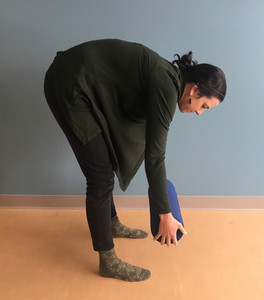
It's snowing and cold in the Rockies! My fiancé and I spent the portion of two days gathering firewood over this past weekend, and that meant a lot of lifting! While the logs were big and often awkward to lift, I always tried my best to keep good lifting mechanics in mind.
When you lift with proper mechanics, you're using more muscles that are the big "heavy movers" and your core muscles help protect your back. When lifting in this manner, you're less reliant on your skeletal structure and postural muscles to do the work, which can often lead to a back strain or ache as a result.
So everybody's heard the advice, "Use good lifting mechanics," but what does that mean? I'm so glad you asked!
Here are a few key points to good lifting mechanics to keep in mind as you're doing your fall garden prep or getting that stack of firewood ready for the winter:

Bend your knees: This is more difficult than it sounds because if you're not used to lifting like this then it taxes muscles that you're not used to using. It takes practice but once you get used to bending at the knees and using your big quad and glute muscles to do the heavy lifting, you may find that you can lift more, more efficiency with less stress on your body.
Keep the natural curve in your low back: In other words, don't round your back. It's easier said than done I realize, but as best you can you want to keep your hips going back like you're sticking your imaginary tail out instead of curling it under you.
Activate your abdominal muscles: All this takes is a gentle tuck of your belly button toward your spine. There are many layers of muscles that comprise your "core" and a tuck of the navel is a good way to start waking them up. If you're feeling ambitious and want to get even the deepest layer involved, aka your tranverse abdominus, continue activating to where you tighten your lower abdomen like you want to pull it away from your jeans zipper. You want good core muscle activation throughout your lift so that your spine has good support.
Exhale as you lift: You want to pay attention to your breath simply so that you don't hold it! Many people hold their breath as they lift a heavy workload and that's a great way to cause a hernia or make you light headed due to increasing pressure in your body. No bueno! My rule of thumb: inhale as your prepare, exhale as you work.

Keep your toes pointed to where you are carrying your load: Last but not least, once you have lifted your bag of leaves, load of firewood or whatever else gets your attention this fall, you will have to move it somewhere. So move it smartly. Do not twist or lean, but instead move your feet. It sounds simple in concept but you'd be surprised. I often see people wanting to save a step or two by leaning and twisting to lay something down but make sure you pick your feet up and always have your toes face where you are going. If it means making that quarter turn to face the garden table or trash can, take the extra half a second and do that. Your back will thank you.
Sometimes it helps people to see an incorrect way of doing something so that they can make a comparison. Below are a couple of pictures of WHAT NOT TO DO when you are lifting so you can see the difference in lifting forms. My object was light for this demonstration. :)
I hope you get to spend time outside and revel in these last few days of October, even if that means doing a little yard clean up or winter prep chores before the weather turns. Whatever it is that gets you outside, lift smart and enjoy it!





Comentários